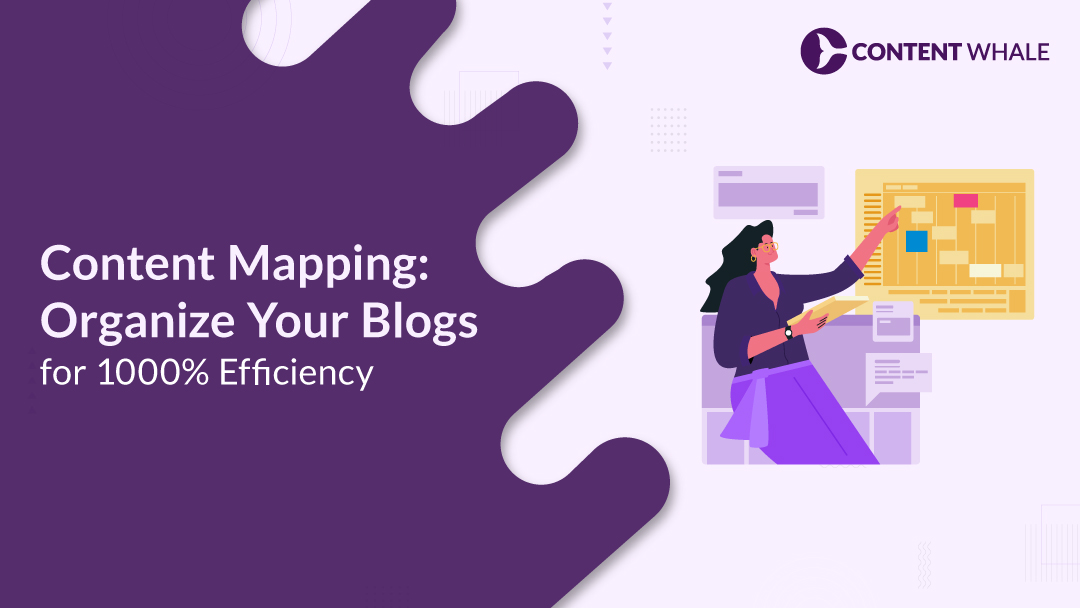Managing a blog can often feel overwhelming, with countless ideas, deadlines, and topics to juggle simultaneously. Without a clear plan, your content strategy may lack direction and effectiveness. Content mapping offers a structured approach to organize your blogs by aligning each post with your audience’s needs and your business goals.
By implementing a thoughtful content mapping process, including effective content planning and a streamlined blog workflow, you can ensure your blog remains focused, relevant, and engaging.
In this blog, we’ll delve into practical tips and strategies to enhance your blog organisation through efficient content mapping techniques.
What is Content Mapping?
Content mapping is a strategic process that visually organises your blog topics to align with both your audience’s journey and your business goals. It serves as a crucial part of your content strategy, helping to structure and plan your blog posts in a way that maximises their impact.
By using content mapping, you can create a clear roadmap for your blog. This involves identifying key themes, organising them into a logical flow, and ensuring that each piece of content fits within your overall content planning. The result is a well-structured blog that meets your audience’s needs at every stage of their journey.
Content mapping also plays a vital role in blog organisation by preventing content gaps or redundancies. It ensures that your content creation process is consistent and coherent, making it easier to maintain a smooth blog workflow. Additionally, aligning your content map with your editorial planning can enhance your content calendar, keeping your blog focused and on track.
Incorporating content mapping into your content strategy not only improves your blog’s structure but also ensures that each post contributes meaningfully to your business objectives.
Steps to Create an Effective Content Map
Creating an effective content map is crucial for a well-organised blog and a solid content strategy. Here’s a step-by-step guide to help you through the process:
1. Set Clear Objectives
Start by defining the goals of your content map. Are you aiming to increase website traffic, enhance brand visibility, or improve user engagement? Setting specific, measurable, achievable, relevant, and time-bound (SMART) goals will help keep your content planning focused and aligned with your overall business objectives.
2. Identify Key Themes and Topics
Use audience research and keyword analysis to identify the main themes that resonate with your target audience. These themes should align with different stages of the buyer’s journey—awareness, consideration, and decision. This ensures that your content creation process addresses the specific needs of your audience at each stage.
3. Organise Topics into Logical Clusters
Group related topics into clusters. Each cluster should be centered around a core theme, with supporting content that links back to this central topic. This approach not only enhances your blog organisation but also strengthens your SEO by creating pillar content that is deeply interconnected.
4. Use Content Mapping Tools
| Tool | Primary Use | Key Features | Pricing |
| Trello | Project Management & Content Planning | Kanban boards, integrations, templates, collaboration tools | Free (basic), $5-$17.50/user/month |
| Ahrefs | SEO & Content Analysis | Keyword research, SEO audits, content & backlink analysis | Starts at $99/month |
| Google Sheets | Content Mapping & Data Management | Online spreadsheets, collaboration, Google integration | Free with a Google account |
| Google Calendar | Scheduling & Workflow Planning | Task scheduling, Google Meet integration, calendar sharing | Free with a Google account |
5. Align with Your Editorial Calendar
Integrate your content map with your editorial calendar to ensure consistent content production and distribution. This alignment helps prevent content gaps and overlaps, keeping your blog workflow smooth and efficient.
By following these steps, you can create a content map that not only improves your blog organisation but also enhances the effectiveness of your content strategy.
Benefits of Content Mapping for Blog Organisation
Content mapping offers several key benefits that enhance both blog organisation and overall content strategy:
Alignment with Audience Journey
Content mapping ensures that your blog content is tailored to the different stages of your audience’s journey—awareness, consideration, and decision. This targeted approach helps deliver the right message at the right time, effectively guiding readers through your blog and increasing engagement and conversions.
Prevention of Content Gaps and Redundancies
By visualising your entire content plan, content mapping allows you to identify and fill content gaps while avoiding unnecessary repetition. This ensures that every crucial topic is covered, maintaining a cohesive blog structure and optimising your content calendar.
Streamlined Content Creation Process
Content mapping saves time and resources by providing a clear, strategic plan for content creation. This eliminates the last-minute scramble to produce content, allowing for more thoughtful and purposeful blog posts.
Enhanced Performance Tracking and Optimisation
With a content map, you can better track the performance of your blog posts. This data-driven approach enables continuous optimisation based on analytics and audience feedback, ensuring your content remains relevant and effective.
Incorporating content mapping into your content strategy not only improves blog organisation but also boosts the overall efficiency and impact of your content efforts.
Conclusion
Content mapping is a powerful strategy that can revolutionize your blog organisation and content planning. By aligning your blog posts with your audience’s journey and business goals, you ensure that each piece of content is purposeful and effective.
Implementing content mapping not only streamlines your content creation process but also helps maintain a consistent, engaging blog structure.
As you refine your content strategy, consider leveraging professional blog writing services like those offered by Content Whale to create well-organised, impactful blog content that drives results. Start integrating content mapping into your workflow today to enhance your content strategy and achieve greater success.
What is the main purpose of content mapping?
Content mapping is designed to align your content with the needs and behaviors of your target audience at various stages of their journey. The primary purpose is to ensure that the right content is delivered to the right people at the right time, which helps in nurturing leads, guiding them through the sales funnel, and ultimately driving conversions.
How does content mapping improve blog organisation?
Content mapping enhances blog organisation by providing a structured approach to content creation. It helps in identifying gaps, avoiding redundancy, and ensuring that every piece of content serves a specific purpose. This structured approach keeps your blog coherent and aligned with your overall content strategy.
Can content mapping help in aligning blogs with business goals?
Absolutely. Content mapping is a strategic tool that aligns your content with your business objectives. By mapping content to different stages of the buyer’s journey, you ensure that each blog post contributes to achieving broader business goals, such as increasing brand awareness, generating leads, or driving sales.
What tools can I use for content mapping?
There are several tools available to assist with content mapping, including MindMeister for mind mapping, Trello for organizing content workflows, and Google Analytics for understanding audience behavior. These tools help in visualizing the content plan, tracking performance, and making data-driven decisions.
How often should I update my content map?
Content maps should be updated regularly, ideally in conjunction with changes in your content strategy or business goals. It’s also beneficial to review and adjust your content map based on analytics and audience feedback to ensure it remains relevant and effective.





